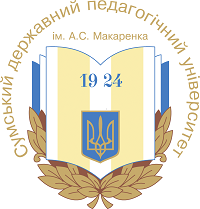REPRESENTATION OF THE EMOTION OF FEAR IN THE DIARY “MARIUPOL. HOPE” BY NADIIA SUKHORUKOVA
DOI:
https://doi.org/10.32782/philspu/2025.11.17Keywords:
fear, emotion, fear activators, verbalization, linguistic means, descriptive constructionsAbstract
The article is devoted to the study of linguistic means of representing the emotion of fear in the diary «Mariupol. Hope», written on social media during the first months of the city’s blockade in 2022 by Mariupol journalist Nadiia Sukhorukova. It has been established that despite the polysemy of the lexeme, fear is described as a primary, basic emotion that enables a person to avoid danger and survive.The linguistic means of representing the emotion of fear have been identified, including primary nominations (страх, жах, жахіття), adjectival epithets (дикий, липкий, неймовірний, смертельний, тваринний, тупий), verbal nominations (боятися, жахати, лякати) and adverbial nominations (лячно, страшно, моторошно).The main fear activators have been considered, among which are: threats to health and life, lack of communication with relatives and loved ones, uncertainty, etc. Their verbalization is characterized by a combination of nominative and descriptive modes of representation.The manifestation of fear is conveyed through a detailed depiction of emotional and behavioral reactions accompanied by significant changes in the physiological and psychological state of a person. The diary entries contain descriptions of various vegetative changes caused by the experience of fear: body trembling, changes in heart function, breathing rhythm disturbances, sensations of cold, body numbness, etc. In the linguistic representation of this emotion, several reactions are often combined and manifested simultaneously, creating a complex image of the individual’s internal state.Fear may lead to the emergence of such behavioral states as panic, stupor, and apathy. To describe these conditions, Nadiia Sukhorukova employs verbs from different lexico-semantic groups (existence, speech activity, psycho-emotional manifestation, sensory action, etc.), descriptive constructions, and metaphorical imagery. At the syntactic level, the diary predominantly features short, fragmentary sentences that reproduce the tense emotional rhythm of experiences.
References
Александров Ю. В. Поняття страху у психології. Психологічні та педагогічні проблеми професійної освіти та патріотичного виховання персоналу системи МВС України : тези доповідей науково-практичної конференції. Харків : ХНУВС, 2021. С. 134–136.
Бригадир М. Б. Особливості появи та відчуття емоції страху в сучасному суспільстві. Науковий вісник Херсонського державного університету. Випуск 2. Том 1. Херсон, 2018. С. 20–24.
Разуванова Ю. Мовні засоби вираження емоційного стану радості (на матеріалі твору Сомерсета Моема «Театр»). Перекладацькі інновації : матеріали ІІІ Всеукраїнської науково-практичної конференції. Суми : СумДУ, 2013. C. 119–123.
Сухорукова Н. Маріуполь. Надія. Київ : Лабораторія, 2023. 224 с.
Великий тлумачний словник сучасної української мови (з дод. і допов.) / Уклад. і голов. ред. В. Т. Бусел. Київ; Ірпінь : ВТФ «Перун», 2005. 1728 с.
Ботвин Т. М. Вербалізація емоції страху в українських перекладах Біблії: Закарпатські філологічні студії. Випуск 18. Видавничий дім «Гельветика», 2021. С. 25–30.
Етимологічний словник української мови. В 7-ми томах. Том 5: Р–Т. Київ : Наукова думка, 2006. 705 с.
Словник синонімів української мови: у двох томах. Т. 2. Київ : Наукова думка, 1999. 960 с.
Комарова З. І. Мовна репрезентація емоції страху в творах Івана Франка. Актуальні проблеми філології та перекладознавства : зб. наук. праць. / гол. ред. І. Б. Царалунга. Хмельницький, 2021. № 21. Т. 1. С. 58–66.
Живанова В. А. Дослідження страху як психологічного феномену в історичній ретроспективі. Вісник Національного технічного університету України «Київський політехнічний інститут». Філософія. Психологія. Педагогіка. № 3. Київ, 2010. С. 121–125.
Зелінська О. Вербалізація емоції страху в дитини в художньому тексті. STUDIA UCRAINICA VARSOVIENSIA. Wydawnictwо Uniwersytetu Warszawskiego. 2022. С. 27–45.








